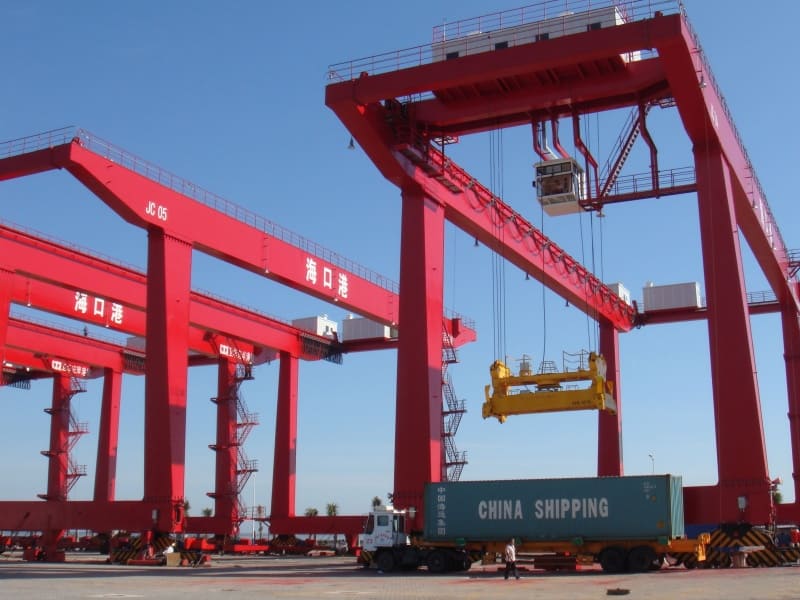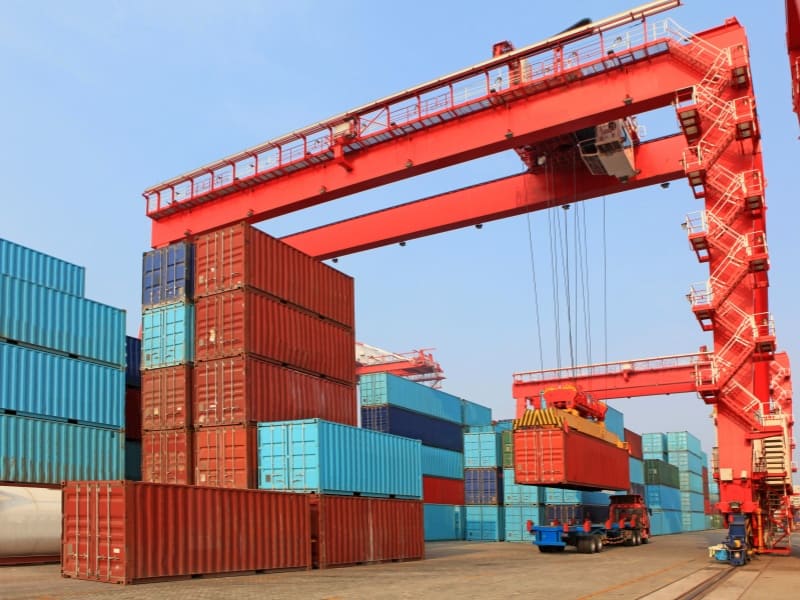A container gantry crane, also known as a quay crane or ship-to-shore crane, is a highly specialized piece of lifting equipment designed for handling intermodal containers in seaports and container terminals. These cranes play a crucial role in global trade by enabling the efficient transfer of large volumes of cargo between ships, trucks, and trains. Without them, the modern containerized shipping industry would not function at its current speed and scale.
Structurally, container gantry cranes are massive machines built with a rigid steel framework supported by four or more vertical legs. Spanning the width of a container ship, the crane’s bridge carries a trolley system that moves horizontally along rails at the top. Attached to the trolley is a spreader, which locks onto the four corners of a container for secure lifting. This design allows containers to be hoisted from ships and precisely placed onto trucks, railcars, or designated storage areas.
The lifting capacity of container gantry cranes is substantial, typically ranging from 40 to 80 tons, with some advanced models capable of handling even heavier loads. They can also stack containers several levels high, maximizing yard space in busy terminals. Modern cranes are designed for speed, with high operating efficiency to keep up with the rapid loading and unloading demands of large container ships.
In addition to their strength, container gantry cranes are equipped with advanced control systems to ensure precision and safety. Features such as anti-sway technology, load sensors, and automated positioning allow operators to handle containers smoothly and minimize operational risks. Many ports are also adopting remote-control and semi-automated cranes to improve efficiency while reducing operator fatigue.
Container gantry cranes come in different types, including rail-mounted gantry cranes (RMG) and rubber-tyred gantry cranes (RTG), each suited to different operational needs. While quay cranes handle ship-to-shore transfers, RMG crane and RTG crane manage container movements within the yard.
Main Components
Container gantry cranes are large and complex machines designed for lifting and moving heavy containers in ports and terminals. Their reliability and efficiency rely on several key components working together seamlessly.
Main Beams: The main beams are the backbone of the heavy duty gantry crane, spanning across its width and carrying the load of all major parts. Built from high-strength steel, they provide the rigidity required to handle extremely heavy containers while maintaining stability. These beams form the core framework upon which the trolley, lifting system, and spreader operate.
Support Legs: The support legs are massive vertical structures that connect the main beams to the ground. They are engineered to transfer the combined weight of the crane and container loads safely into the foundation. In most designs, these legs are mounted on rails embedded in the dock surface, allowing the crane to travel smoothly along the quay to service different sections of a vessel.
Ground Beam: Running parallel to the berth, the ground beam reinforces the structure by linking the support legs. It not only stabilizes the crane but also houses the mechanisms that enable the crane to travel along its rails. By distributing forces evenly, the ground beam ensures safe and reliable operations during heavy lifting.
Spreader and Container Hanger: At the heart of the lifting process is the spreader, often referred to as the container hanger. Equipped with twist locks, it secures onto the four corners of a container, ensuring a firm grip during lifting, lowering, and horizontal movement. Modern spreaders are adjustable, allowing them to handle containers of different sizes, such as standard 20-foot and 40-foot units.
Trolley System: The trolley of the heavy duty gantry crane travels along the main beams, carrying the spreader and container between the ship and the storage yard. Powered by electric motors, the trolley provides precise positioning, enabling efficient loading and unloading operations. Its speed and accuracy are vital for maintaining the productivity of port operations.
Winch and Hoisting Mechanism: The winch system, driven by powerful motors and steel cables, raises and lowers the spreader. Controlled from the operator’s cabin or remotely, the hoisting mechanism ensures smooth, stable lifting. Safety systems, including overload protection and anti-sway technology, are often integrated to guarantee secure handling of heavy loads.
In conclusion, container gantry cranes are indispensable in modern logistics, combining immense lifting power with precision technology. Their role in accelerating cargo handling makes them vital for global shipping, ensuring that goods move seamlessly across supply chains.









